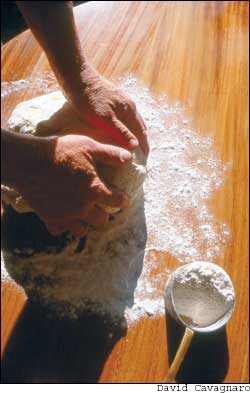
primary-image, l
(recipe, Matthew Barker)

primary-image, l
Introduction
This is an excerpt from “McCay’s Miracle Loaf,” which originally appeared in the September/October 1981 issue of Mother Earth News. To see the full article, check out Mother’s Amazin’ Archive at www.MotherEarthNews.com. McCay’s original recipe is for manual baking. If you’d like to try it in a bread machine, go to www.baking911.com/bread/machines.htm for formulas to convert regular bread recipes to be made in machines. — Mother In the 1930s, Dr. Clive McCay, a Cornell University nutrition researcher, made a momentous discovery — he found that by feeding laboratory animals a low-calorie diet rich in minerals, vitamins and protein, he could retard the onset of old age and dramatically increase the animals’ longevity. His research attracted the attention of New York state officials, who asked him to help improve the diets of the state’s mental patients. McCay developed a highly nutritious bread made with soy flour, wheat germ, wheat flour and dry milk. He offered the recipe to bakeries in a low-income section of Brooklyn in hopes of improving the health of the area’s impoverished residents. Acclaimed by The New York Times as the “Do-good Loaf,” Cornell Bread attracted a wide following among bakers who praised the recipe for its delicious taste and extraordinary nutritional qualities. The special features of the Cornell Bread that make it different from ordinary bread are the additions of soy flour, nonfat dry milk and wheat germ. Soy flour is a rich protein concentrate, with more than 40 percent protein. It supplies amino acids that are lacking in wheat as well as calcium, iron and B vitamins. Nonfat dry milk has about twice the protein value of meat. It is a good source of calcium and riboflavin. Wheat germ adds more protein, iron, B vitamins and vitamin E to the mix. Read more: http://www.motherearthnews.com/Real-Food/2005-02-01/Dr-McCays-Miracle-Loaf.aspx#ixzz1Kf2Fnq00
Ingredients
Steps